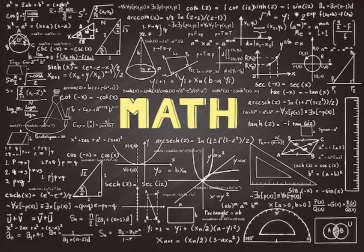Question
a.
True
b.
False
c.
May be
d.
Can't say
Posted under Finite Automata and Regular Expression Compiler Design
Engage with the Community - Add Your Comment
Confused About the Answer? Ask for Details Here.
Know the Explanation? Add it Here.
Q. A nondeterministic finite automaton with ε-moves is an extension of nondeterministic finite automaton
Similar Questions
Discover Related MCQs
Q. Is an ordinary NFA and a NFA-ε are equivalent
View solution
Q. Which grammar is not regular
View solution
Q. If is a language, and is a symbol, then, the quotient of and, is the set of strings such that is in: is in. Suppose is regular, which of the following statements is true?
View solution
Q. Here is a context-free grammar G: S → AB A → 0A1 | 2 B → 1B | 3A which of the following strings are in L (G)?
View solution
Q. The grammar G: S → SS | a | b is ambiguous. Check all and only the strings that have exactly two leftmost derivations in G
View solution
Q. For the following grammar: S → A | B | 2 A → C0 | D B → C1 | E C → D | E | 3 D → E0 | S E → D1 | S Identify all the unit pairs
View solution
Q. The classes of languages P and NP are closed under certain operations, and not closed under others. Decide whether P and NP are closed under each of the following operations.
1. Union
2. Intersection
3. Intersection with a regular language
4. Kleene closure (star)
5. Homomorphism
View solution
Q. Ndfa and dfa accept same languages
View solution
Q. If the NFA N has n states, then the corresponding DFA D has 2n states
View solution
Q. An NFA is nothing more than a ε-NFA with no ε transitions
View solution
Q. For every DFA, there is a ε-NFA that accepts the same language
View solution
Q. DFAs, NFAs, and ε-NFA s are equivalent
View solution
Q. Consider the languages L1 = and L2 = {a}. Which one of the following represents L1 L2* U L1*
View solution
Q. Given the language L = {ab, aa, baa}, which of the following strings are in L*?
1) abaabaaabaa
2) aaaabaaaa
3) baaaaabaaaab
4) baaaaabaa
View solution
Q. Which of the following are regular sets?
I. { a^n b^2m | n>=0, m>=0}
II. {a^n b^m |n=2m}
III. {a^n b^m | n!= m}
IV {xcy |x,y€{a,b)*}
View solution
Q. Let L1 = {w ∈ {0,1}∗ | w has at least as many occurrences
of (110)’s as (011)’s}.
Let L2 = { ∈ {0,1}∗ | w has at least as many occurrences
of (000)’s as (111)’s}.
Which one of the following is TRUE?
View solution
Q. The length of the shortest string NOT in the language (over Σ = {a, b}) of the following regular expression is _____________
a*b*(ba)*a*
View solution
Q. How many minimum states are required to find whether a string has odd number of 0’s or not
View solution
Q. Consider alphabet ∑ = {0, 1}, the null/empty string λ and the sets of strings X0, X1 and X0.How are X1 and X2 are related ?
X0 = 1 X1
X1 = 0 X1 + 1 X2
X2 = 0 X1 + {λ}
Which one of the following represents the strings in X0?
View solution
Q. Which of the following languages is/are regular?
L1: {wxwR ⎪ w, x ∈ {a, b}* and ⎪w⎪, ⎪x⎪ >0} wR is the reverse of string w
L2: {anbm ⎪m ≠ n and m, n≥0
L3: {apbqcr ⎪ p, q, r ≥ 0}
View solution
Suggested Topics
Are you eager to expand your knowledge beyond Compiler Design? We've curated a selection of related categories that you might find intriguing.
Click on the categories below to discover a wealth of MCQs and enrich your understanding of Computer Science. Happy exploring!








